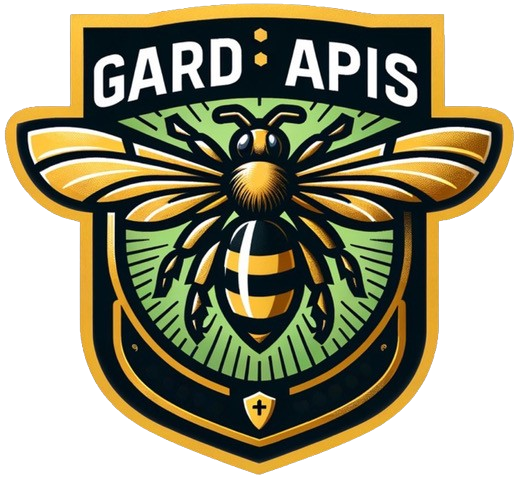The Gard’Apis trap is :
- Designed to be highly selective and only trap Asian Hornets.
- Designed to do no harm to other insects
- Easy to use
- Quick to re-deploy
How the Gard’Apis Trap was Developed
The first key ‘idea’ was to use something that all beekeepers have – the queen ‘excluder’ is used as a quick, readily available, and cheap body for the trap. One half of a Dadant 425×500 queen excluder is use for each trap. These are supplied with the Complete Asian Hornet Trap Kit.
The next idea was to to use ‘cones’ to funnel the hornets into the trap, but sized to prevent as much by-catch as possible. Of course, any smaller insects, like bees and wasps, can escape through the sides of the trap.
Initially cones were made of mesh and pipe fittings, to demonstrate that the trap would work. Insect behaviour is hard to predict and so it was necessary to test that every permutation still worked. We 3D printed our prototypes to allow quick field trials. Our first designs used a complete queen excluder, but hornets tended to crawling on the outside near the bait rather than finding their way in through the cone. Once we switched to the half excluder the Asian Hornets virtually lined up in the cone to be caught!
After 26 variations we arrived at a design that worked and worked extremely well. We then had the cones injection moulded to produce the final product that you see today.
ByCatch: A Serious Problem
ByCatch is a real problem.
Killing other insects in order to also kill Asian Hornets is counterproductive and can be more of a problem than doing nothing. It is easy to underestimate the power that humans have and the lasting harm we do when we intervene in the environment to trap and kill insects.
Pollinators live in a delicate balance with their environment which also includes insects that predate on them. Indiscriminate killing upsets this balance and even a few traps can result in a crash in insect populations over a large area. Insects have enough problems to deal with without adding to them. The Gard’Apis trap is specifically designed to reduce Asian Hornet populations without impacting other insect species.
Please do not use attempt to control Asian Hornets by using non selective kill traps such as beer traps.
Zero-Bycatch: How to use the Red and Orange Nozzles
Each Gard’Apis kit comes with red and orange coloured nozzles that fit to the cones. These are designed to all but eliminate bycatch.
In the spring use the Red nozzle. In spring the queens are out foraging to feed their first nests. Every Queen killed kills an entire nest and so it is particularly important to have traps out to when the Queens first appear. Queens are larger than their workers and so the nozzles are larger to allow them in. However European hornet queens are also out and the nozzle is small enough so that they cannot enter. All other insects that might be attracted to the trap (including bees) are either small enough to easily escape through the mesh body of the trap or are too large to get through the nozzle.
The Asian Hornet Queens do not leave the nest again after their first brood of workers emerge. The workers are very slightly smaller than their queens and this is why we can switch to the Orange nozzle. Switch to the orange nozzle 6-8 weeks after the first Queens are sighted. These nozzles allow the Asian Hornet Workers to enter the trap but not the European Hornet Workers that also appear around this time.
Our experience has been virtually zero bycatch. If there is bycatch place the trap in a freezer until all the insects stop moving, open the trap and remove the bycatch (a spoon works well), put the insect to be saved outside to recover, and return the trap, complete with hornets back to the freezer for an hour or two to kill the remaining occupants. Then rebait your trap, leave a couple of dead Hornets in the trap too as this also seems to lure more Hornets.
Please let us know about your results.
We know from our own trials and the experience of our community of testers that reducing the numbers of local queens in the spring pays big dividends later in the year. Fewer Queens means fewer nests and fewer Workers later in the summer.
Please send your photographs and tell us about your experience on FaceBook.








